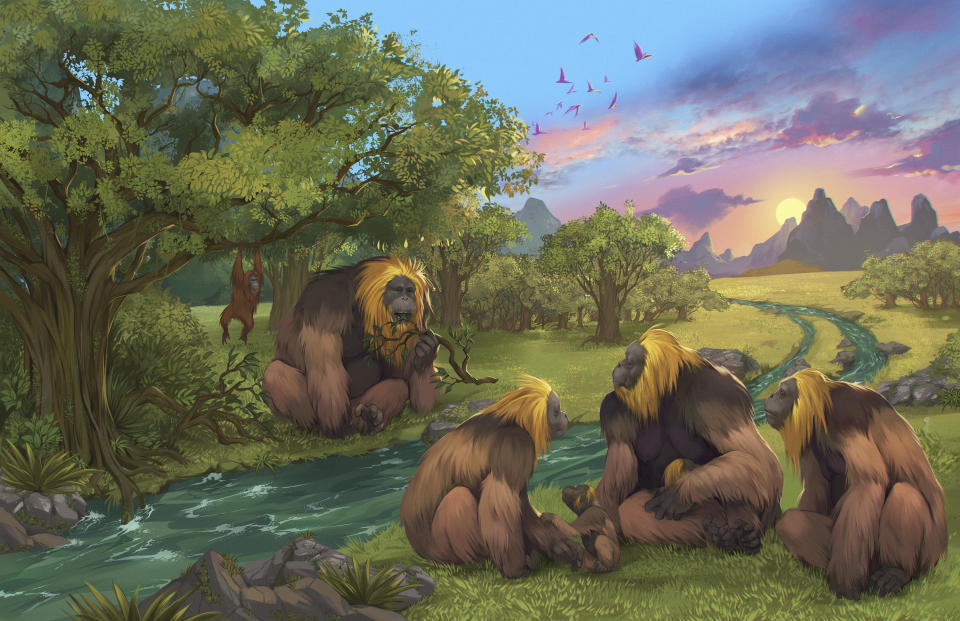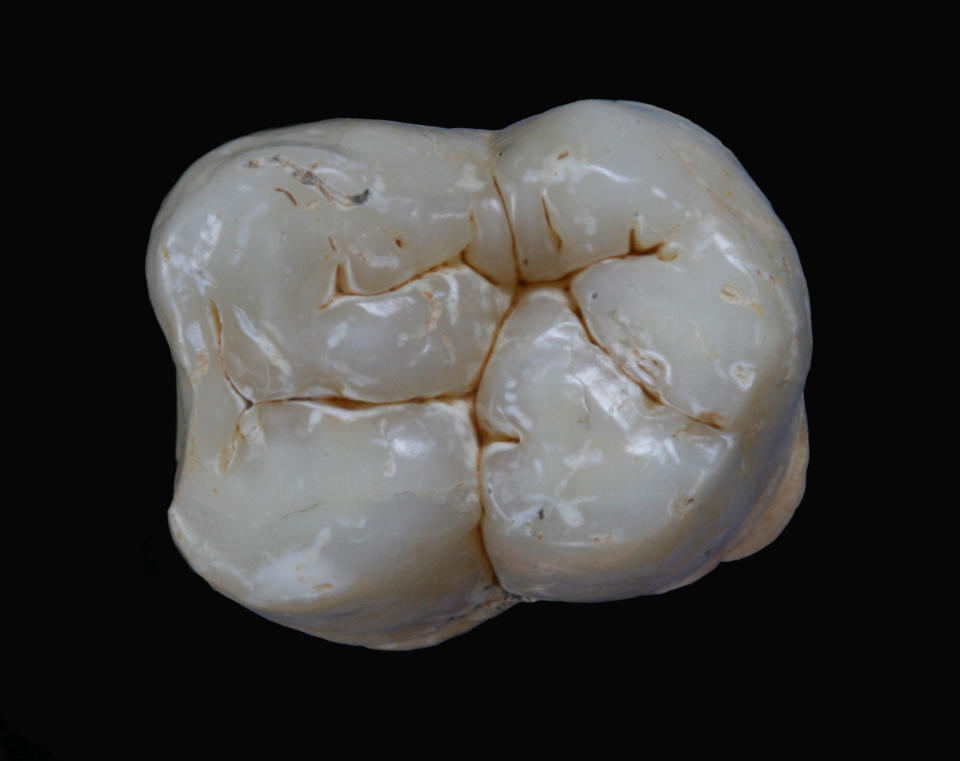The largest primate to ever walk the Earth became extinct because it was unable to adapt to its changing environment, and the mighty beast was reduced to surviving on bark and twigs before it died, said the scientists on Wednesday.
Gigantopithecus blacki, which stood 10 feet tall and weighed up to 660 pounds, thrived in the forests of southern Asia until just over 200,000 years ago.
Exactly why the great ape died out after flourishing for hundreds of thousands of years has been one of the enduring mysteries of paleontology ever since the German scientist GHR von Koenigswald stumbled upon one of its teeth at an apothecary in Hong Kong in the 1930s.

The molar was so large that it was being sold as a “dragon’s tooth.”
“It was three or four times larger than the teeth from any great monkey,” said Renaud Joannes-Boyau, a researcher at Southern Cross University of Australia, Agence France-Presse.
“That informed him and that’s where all this research started,” said Joannes-Boyau, co-author of a new study in the journal Nature.
Only four partial jawbones and around 2,000 teeth have been found of Gigantopithecus since then, hundreds of which were found inside caves in China’s southern Guangxi province.
Even after a decade of excavations in these caves, the cause of the monkey’s extinction was still unclear, said co-author of the study, Yingqi Zhang, of the Chinese Institute of Vertebrate Paleontology and Paleoanthropology.
Looking to establish a timeline of the animal’s life, a team of Chinese, Australian and US scientists collected fossil teeth from 22 caves.
The team used six different techniques to determine the age of the fossils, including a relatively new method called luminescence dating that measures the last time a mineral was exposed to sunlight.
The oldest teeth date back more than 2 million years, while the most recent teeth are from around 250,000 years ago.
Now the researchers can tell “the whole story about the extinction of Gigantopithecus” for the first time, Zhang told AFP in his office in Beijing.
A giant animal made a “huge mistake”
They established that the animal’s “window of extinction” was between 215,000 and 295,000 years ago, much earlier than previously thought.
During this time, the seasons were becoming more distinct, which was changing the local environment.
The thick, lush forest where Gigantopithecus thrived was beginning to give way to more open forests and grasslands.
This made him increasingly deprived of his favorite food: fruit.
The huge animal was tied to the ground, unable to swing into the trees for food higher up.
Instead, it “relied on less nutritious food like bark and twigs,” said Kira Westaway, a geochronologist at Australia’s Macquarie University and co-author.
Zhang said this was a “huge mistake” that ultimately led to the animal.
“Ultimately their struggle to adapt led to the extinction of the largest primate that ever lived on Earth,” the authors of the study wrote.
The primate’s size made it difficult to go far in search of food – and because of its enormous size it needed plenty to eat.
Despite these challenges, “surprisingly, G. blacki even increased in size during this time,” Westaway said.
By analyzing its teeth, the researchers were able to measure the increasing pressure the monkey was under as their numbers dwindled.


Proteins detected in the Gigantopithecus fossil revealed that the Bornean orangutan is its closest living relative, according to a 2019 analysis.
“It would be a distant cousin (of orangutans), in the sense that orangutans are its closest living relatives, compared to other great living apes such as gorillas or chimpanzees or us,” Dr Frido Welker, from the University of Copenhagen, told BBC News in 2019.
For the new study, the researchers compared the fate of Gigantopithecus with its orangutan relative, Pongo weidenreichi, which handled the changing environment much better.
The orangutan was smaller and more agile, able to move quickly through the forest canopy to gather a variety of food such as leaves, flowers, nuts, seeds and even insects and small mammals.
It became even smaller over time, and thrived as its giant cousin Gigantopithecus became hungry.
Westaway emphasized that it was important to understand the fate of the species that came before us – especially “with the threat of a sixth mass extinction event looming.”
Between about 2 million and 22 million years ago, several dozen species of great apes lived in Africa, Europe and Asia, fossil records show. Today, only gorillas, chimpanzees, bonoboorangutans and humans remain.
Although the first humans evolved in Africa, scientists don’t know where the great ape family first arose, said Rick Potts, who directs the Human Origins Program at the National Museum of Natural History. Smithsonian and was not involved in the study.
The Associated Press contributed to this report.
Boeing CEO admits mistake on Alaska Airlines 737
Hunter Biden leaves House committee meeting wild after surprise appearance
House Committee holds Hunter Biden in contempt after unexpected appearance on Capitol Hill